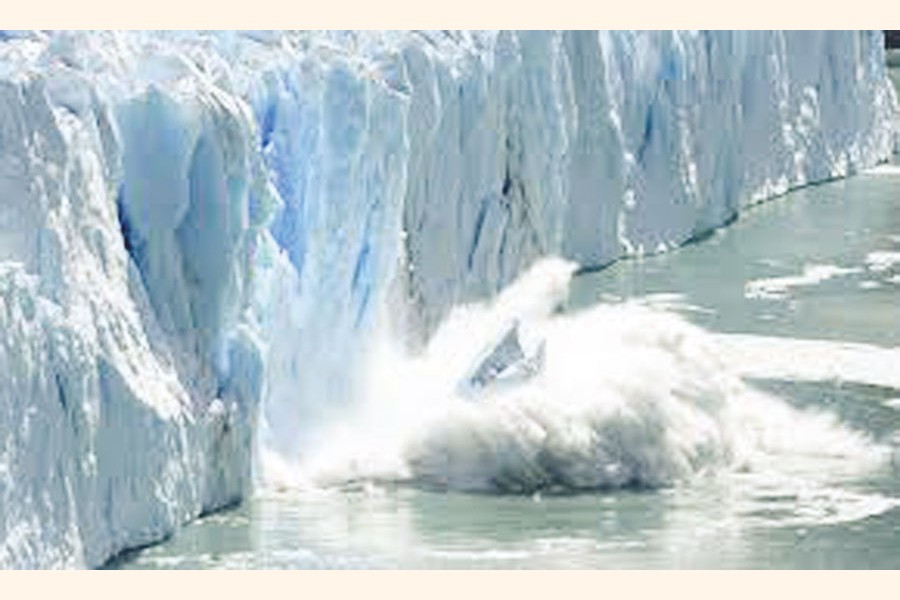A layman's contribution to greenhouse gas is insignificant. He and his family may burn sliced logs, straws and leaves for cooking and other purposes and in the process cause carbon emission of a paltry amount. But traditionally he has inherited knowledge of reading the signs of wind and air and a lack of their flow, cloud formation in the sky and the movement of some creatures and flight of birds to make a prediction of weather whether it would be fine or foul.
With the passage of time such a man's keen observation of Nature is getting blunted. Now he waits for weather forecast to know precisely if it would be raining or the temperature will be atrocious for the next few days. Here employment of mind makes the difference. Today a man knows he does not have to read the various signs to draw a conclusion about the weather to prevail but there are experts who will tell about the sunny or rainy days waiting to welcome him.
Earlier the situation was completely different when people had to rely on their sense perception and analyse the condition in the light of their past experience inherited from their forefathers. They did not have to know that a depression was forming in the Bay of Bengal and it might ravage the coastal areas as also inducing pitter patter rainfall all across the country. But they could sense the abnormal change in weather.
For example, the veterans among the populace could give a prior notice of gusty wind accompanied with intermittent rain for a few days together in the month of Kartik. They also had a name for the untimely rains---kytani. The season Hemanta spans the month of Kartik and Agrahayan and poet Jibananda Das is credited with the discovery of the season for the Bangalees in a completely new light. The dusky and gloomy Hemanta appears before us in its sombre and yet nostalgic connotation. However, the tumultuous kytani or katali days and nights are completely absent from his poems. In fact, no writer and poet has made it a subject of importance from the literature point of view.
The tragedy of 12 November, 1970 cyclone that left more than one million people dead and millions of cattle and poultry washed away is the worst form of katyani to have wrought limitless havoc in living memory. After quite a few years of dry season prevailing during this time, this year the katyani has staged a comeback and made its presence felt in a rather forceful manner. Whether it is the result of the prolonged lockdown all across the globe or just the cycle of the climate pattern may be a subject of scientific research, but to the few people still considered torchbearers of traditional knowledge this is quite usual. They are not surprised by the rains and most likely will refuse to accept it as capricious weather.
Will the winter set earlier this year then by the influence of this cooling weather? Weathermen have indicated it may indeed happen. Last year was different from some of the previous years at a stretch marked by no wintry chill. On that count the year 2020 was comparably a bit colder. If the pattern continues this year and the next year and the following year too, there will be no reason to be surprised. This is how weather or climate cycles have visited this part of the world.
That sizzling heat has made life insufferable in France's capital Paris for two consecutive years may be baffling enough. Similarly extreme heat waves ---called heat domes because temperature is trapped within an area ---gave the Americans and Canadians the hell of a life from late June through mid-July. Extending from northern California, Idaho, Oregon, Western Nevada to Washington in north-western America to British Columbia and a little a later up to Alberta and Manitoba along with a few other areas, the heat waves could be the direct consequences of climate change.
A layman may not explain such abnormal changes in weather pattern because such phenomena mark a wide departure from anything experienced so far. On a mini scale, the heat dome may have its visitation in this land. That standing crops in isolated patches of crop fields were severely affected may be due to the heat dome. Paddy sheaves dried without developing corn in the husks. Reality is proving atrocious and looking ominous. If the story of human struggle demands scientific research, it may also be a poignant tale told by powerful literary figures.

- Saturday, 23 November 2024 |
- Today's FE |
- e-Paper |
- Beta Website

